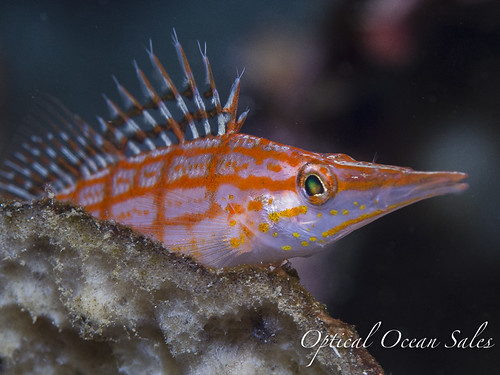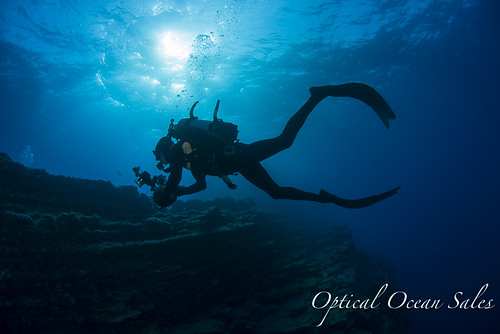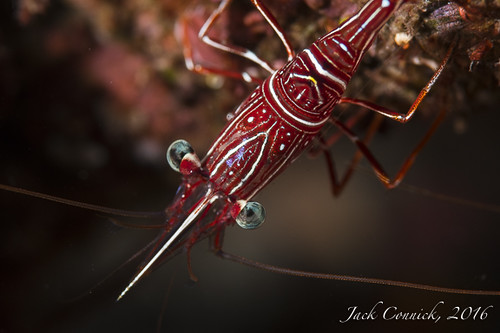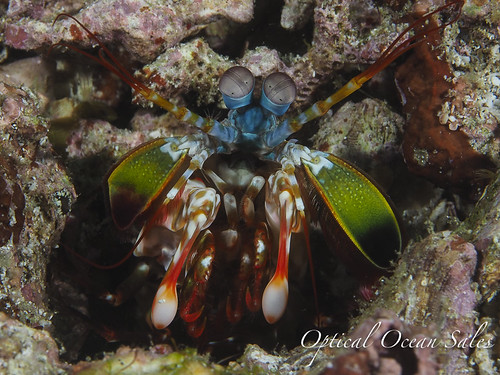(Continued from Part 2)
Underwater photographers have always debated their cameras and there are always questions and continuing debates about the virtues and performance of various formats. We cover all of their pros and cons in our free Handbook: Choosing an Underwater Camera & Housing, but here's my experience.
 |
| Olympus E-M1 MKII |
With airline travel restrictions and costs increasing, the desire of most divers is for a smaller, more capable system. They want to be able to have their cake and eat it too. But are the smaller sensor format cameras that good or that small in the end?
Can a smaller, pro quality camera make up the distance with high quality optics and technology? Pretty much it was no contest for the end results; the image quality and performance (for stills anyway) is much better with a larger sensor camera like a D500 or D800. The deck was stacked against the smaller sensor format E-M1 MKII.
While the good news is that m4/3rds cameras are physically smaller; the bad news is their sensor is also smaller. Olympus and Panasonic (with Sony’s help), have continued to work miracles with the m4/3rds sensor, as well as its software, processors and SD card. However, the dynamic range of cameras like the E-M1 MKII, is lacking when compared to APS-C or full frame cameras like the D800. For video the smaller sensor works well; it gives a better crop and larger depth of field. Video focus with a larger sensor camera can be tricky.
 |
| Nikon D800 |
With the E-M1 MKII, I found it very hard to shoot a nice reefscape with a brighter surface (let alone sunball), with the blues transitioning from dark to light for instance. Surface water would band into cyan, even at f/8. Yes, it would work, if you shot at a low ISO, with a higher shutter speed and aperture (f/13 or so), and then turned up your strobes. But in a place like Socorro, which is darker and has reefs that are large, it became problematic to try to light.
Shooting with a large sensor camera like the Nikon D800, allows me to really capture these dramatic scenes with far greater latitude, ease and quality. You just can’t put the same amount of information on a sensor that’s 4/3rds the size.
 |
| Nikon D800 |
When traveling with a DSLR, you can have two ports and a couple of extensions to house four or more lenses – so packing isn’t that bad. Micro 4/3rds lens optics tend to require a port for each lens – so there’s more ports to buy and pack, even if they’re smaller. So that must be factored.
Yes, the D800 is heavy and larger, but in the water, many of those issues go away with some flotation. Newer DSLR housings are becoming smaller and lighter as well.
Handling in the water isn’t that much different between them, dome size was the same. The E-M1 MKII is easier to navigate in tight places, particularly for macro or close focus/wide angle. Otherwise for bluewater reefscapes, the D800 isn't hard to handle, it just has more mass.
 |
| Nikon D500 |
The Nikon D800’s image quality and focusing performance is far superior. The E-M1 MKII has a much faster 18fps frame rate. For those who are free-diving and staying either deep, or shallow, where you can balance the lighting easier, the m4/3rds camera work out well, especially with the E-M1 MKII’s smaller handling size. So there are tradeoffs both ways.
However, I preferred to snorkel with my D800 in Mexico. Even though the Nikon can only shoot at 4 fps, all those frames are going to have a much richer exposure latitude and detail. When I review the images, I tend to go for that one shot that the Nikon D800 rendered perfectly, even in tough low-light conditions.
 |
| Nikon D500 |
A smaller newer, DSLR such as the Nikon D500, has many of the best qualities of both. It's smaller, with a fast frame rate and great low-light performance, with lots of lenses and small dome ports you can use. Depth of field is great for macro and low-light auto-focus is extremely fast - it literaly can see in the dark.
I also much prefer the large bright optical viewfinders that DSLRs use. Focus is fast and accurate with no electronic blurs or problems with blow out in high key situations.
The E-M1 MKII electronic viewfinder is about the best I've seen. Their technology has improved and can offer features like focus peaking that colors the parts of the shot when sharp. Nikon has steadily refused to offer that feature.
 |
| Olympus E-M1 |
 I admit, even after several trips with Olympus E-M1 and PEN cameras, I have a love-hate relationship with the m4/3rds format.
I admit, even after several trips with Olympus E-M1 and PEN cameras, I have a love-hate relationship with the m4/3rds format.
I love their programmability, high-quality lenses, handling and travel size, and the fact that they work faster and easier for macro. I enjoy shooting them topside, they're rugged and light to carry with a plethora of shooting features. But in the end I prefer the image quality and dynamic range of the APS-C and full-frame cameras.
Each has a place in my underwater photo toolkit, depending on the trip or type of shot I'm after. In the end, it's the images that are the bottom line.

